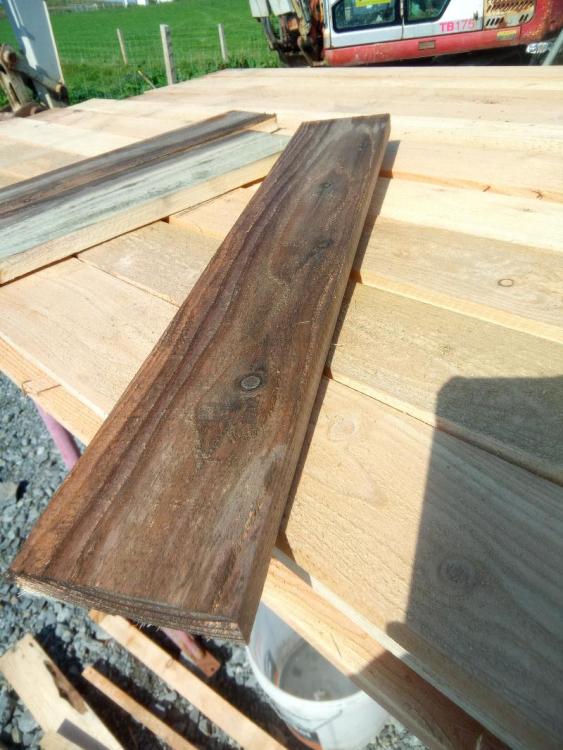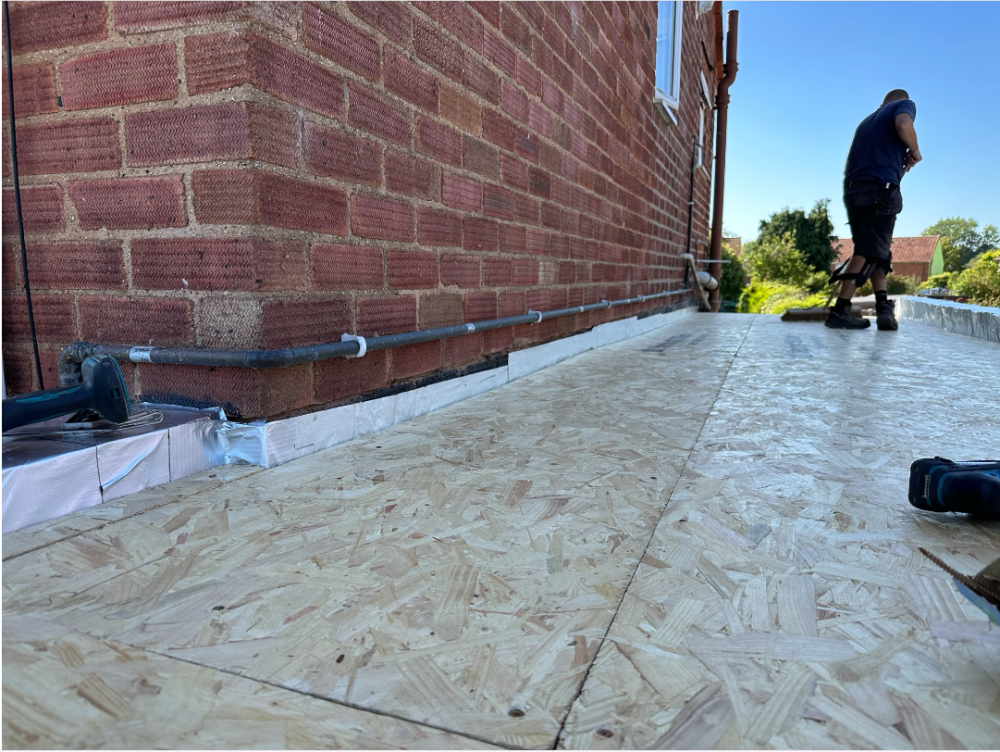Leaderboard
Popular Content
Showing content with the highest reputation on 09/12/23 in all areas
-
>>> Every one expects to have to pay a reasonable fee providing an architect can manage to drawer up a set of plans that will go through planning the first time round. The client shouldn't have to pay for versions 2, 3, 4 & 5 because the architect can't do his job properly. <<< I'm not sure I agree with that. You should generally get through planning first time given a reasonable site, with OK road access, within a settlement boundary, not near a 'heritage asset' - with a bog-standard design nearly identical to next door / the nearest house. However not all sites are like that and may have some planning challenges - and the risk is really an attribute of the site and on the owner, not the architect. If you were the original landowner, you may well have specified "minimum risk - just get me my pot of gold." Now the owner / builder may not want 'nearly identical to next door / the nearest house'. They may want to push the planning boundaries a bit in terms of size, position, style etc. Again the added risk will be down to the owner - if they're the ones that have pushed the architect away from the 'safest' design. A good architect will communicate the risk level and ensure the owner understands it and is happy with it and give them the choices up-front. And given that new plans / iterations take work, it's not unreasonable to pay for them. >>> And when he does the detailed drawings for building regulations it would be nice if the rsj shown was actually resting on something at the other end, instead of being supported by a sky hook. I think both architect and customer need to be clear about the architect's detailed design / structural skills. Again, there needs to be some conversation and thought about the how standard the construction is. Bog standard / within the architect's direct experience - the architect should be able to develop workable BC-style plans. Crazy zinc-clad this, carbon-fibre that, aerogel insulated, custom steel design etc etc etc. Clearly the risk is much higher and you'll need either an architect / SE combination that has direct experience of those exact methods or allow extra in the budget for mistakes / investigation / experimentation. It's the owner's / main contractor's job to understand the level of risk, where the key design uncertainties are, and manage and price accordingly. I guess what I'm getting at is risk, management and responsibilities - dull but important. It's key to understand and sort those out up-front. And there will probably always be some unexpected challenges that need to be sorted out tactically during the build.3 points
-
You have everything needed to generate cracks, doorways, lintels (probably timber) landing joists … most likely minor movement due to temperature and humidity. Nothing to worry about in a house of that age, unless it gets much bigger.2 points
-
2 points
-
There's an Italian ASHP A2W that can do cooling and hot water heating at the same time. The cylinder has an additional coil for refrigerant, the refrigerant is diverted to cylinder during cooling mode.2 points
-
That would help, lets us see what you have on your plate.1 point
-
Can glass fibre chippings be added to a concrete mix to reduce cracking? As for where the pipes go. I would say never next to the PIR, that just heats the insulation more than needed, which increases the temperature delta to the ground. The closeness to the surface is really set by the pipe spacing. So if your pipes at at 150mm spacing, then 75mm depth, 100mm spacing, 50mm depth. Depth from surface equals half pipe centre spacing.1 point
-
A bit like icebergs bobbing up. I had a plumber who insisted he was expert in UFH (before it was common) , and that he had to include the screeding in his package. An open plan office area of about 200m2. The PIR floated up, he panicked and my masterful management skills kicked in, amounting to: stop pouring: bring in concrete blocks to lay on the pir : start pouring. It could have been much worse and fortunately I had felt the urge to be on site. This was with taping of joints but not a plastic sheet as well, which is optional. Tape should work but clearly is fallible*. The cost of the extra sheet is not much compared to the risk. * I think the issues are where tape is loose, or has come off, and at edges where it isn't fixed hard.to anything. The downside of a top sheet might be that it conceal gaps in pir or the use of multiple offcuts.1 point
-
Very difficult to put a time on an unknown but let’s say we are looking at fitting a new hardwood door, as a SB’er you are going to be picky and scrutiny everything so we need to allow 3-4 hours. now let’s say you buy a similar door used, how well was it fitted previously? Do hinge pockets need packing or filling? Is it square? - possibly needs trimming on all sides to square it up, is it the right way? R/L opening? Allow a day faffing and fitting. basically, if you get a good door for free you should be ok to save a few £, but I would never pay for a used door unless it was an extra large one or something special1 point
-
The ARB. Very helpful when I spoke with them. You can only complain about individual architects rather than a practice. The guy I spoke suggested there is the possibility of this changing in the future.1 point
-
1 point
-
1 point
-
Architects overcharge and are impractical Engineers overdesign Builders are all cowboys. Surveyors get in the way. Planners are unreasonable. Building Inspectors are too fussy. Clients? it's a shame we need them. Don't worry BH is here to help with fair and polite enquiries.1 point
-
Yes. Be polite in your dealings and send the information requested promptly. If you are unsure what they are requesting, just ask. It is standard to request BC approval and Risk Assessments and Method Statements (RAMS) from the builder. For your work, this may be, for example, detailing how the structure will be safely supported and the new beams installed.1 point
-
You mean that? I've done that several times. Even once with mutiple ibc units linked to store 6m3. Not pretty but an industrial unit, and avoided the EA suggestion of a green roof. So client v pleased, and EA too. This works so has to be better for downstream people than a drain straight to ditch. The bco may not be bothered, but i think we all need to do what we can.1 point
-
Hi @ronald_1978 I'm not sure whether you're aware (and hat-tip to @ProDave who spotted it), but this post can't be replied to by members. I can only reply because I'm a moderator. I think you may have clicked on the circled box when you set it up: I don't think the mods can change this after posting, so if you'd like answers to your questions rather than just poll responses, I'd recommend re-posting your question again as a new poll, without checking that box. Once you've done that we'll delete the first post. Thanks Jack1 point
-
Every one expects to have to pay a reasonable fee providing an architect can manage to drawer up a set of plans that will go through planning the first time round. The client shouldn't have to pay for versions 2, 3, 4 & 5 because the architect can't do his job properly. And when he does the detailed drawings for building regulations it would be nice if the rsj shown was actually resting on something at the other end, instead of being supported by a sky hook.1 point
-
Prevention against corrosion can be relevant for an outdoor slab, but doesn't apply to an indoor slab as it is totally dry. Mesh is used primarily for strength and secondly for crack control. If it wasn't needed, and wasn't present, then there wouldn't be any reason to protect it. Putting a single layer approximately centrally ensures that the slab stresses are balanced and it doesn't curl.1 point
-
I would say if the pipe is at the bottom of concrete, compared to middle the heat would be felt at the surface quicker if mounted in the middle. The logic is the heat radiates from the pipe, almost evenly (almost as it will always prefer to travel towards the lowest temperature). The heat as it spreads would have lost some heat to concrete each mm it moves from the heat source, the further way from the heat the more time it takes to get to the surface. However saying all the above, thick screed requires long slow heating regime, either 24/7 or use as a storage heater over 7 plus hours. Hoping to put on the heating when you get home or an hour or so before you get home will lead to a cold house. Thick screeds make a simple heating system, one thermostat for the whole house, no need for so called smart controls, run on weather compensation or a modified curve to allow storage heating over 7 hours. It actually 50mm from the surface and bottom of concrete, minimum, to prevent corrosion, not really much to do with reinforcement properties.1 point
-
Would be interesting for someone to do an experiment regarding ufh Pipes stapled to the PIR vs halfway on the mesh.. Checking surface temperatures over time etc.. Logic says that you'll feel it faster if its near the surface, but also 50% of the initial heat will be going downwards towards the PIR as well as up, so would it really be that noticeable? It's still the same mass of concrete to absorb the heat before dissipating it out to the room.. Thoughts?1 point
-
Correct. I wonder if the op is satisfied with the answers. Obv mist people are saying its over 1,000. I'd venture 3k is typical for a reasonably traditional design where most details are standard, and without PM role.1 point
-
J M W Turner when asked how long it took for him to produce a painting (forget which one) - answered with his chronological age (38 years at the time). I suspect that one of the jobs a professional does is make things look easy to people -like me - who wouldn't know where to start. And back their professional judgement up with Public Liability Insurance.1 point
-
I think this thread has got off topic. The original question from @flanagajwas how much would they expect to pay an architect. Please can we keep to this topic, not bashing architects. We all have a choice when paying anyone whether it be architects, lawyers, electricians or plumbers. We can decide if we are happy with their charges and pay them or go elsewhere. I think considering the interest in the forum from architects it is unfair for them to be so harshly singled out and bashed.1 point
-
1 point
-
If it were me, I would want a 'choc box' around that. https://www.screwfix.com/p/debox-24a-in-line-junction-box-50-x-102-x-28-5mm-white/8692H?kpid=8692H&cm_mmc=Google-_-Datafeed-_-Electrical and Lighting?kpid=KINASEKPID&cm_mmc=Google-_-TOKEN1-_-TOKEN2&gclid=Cj0KCQjw0vWnBhC6ARIsAJpJM6d7h7UdlLnHpLyERO9o6pgd1Jp-e6ufXM-IAlVHMIOeEhDR6ycdd_IaApBzEALw_wcB&gclsrc=aw.ds Reason being any movement on either flex could pull one of the terminations out.1 point
-
1 point
-
Very very cheap. Please share where you can get a design for £1000 and construction drawings for an extra £250-£300.1 point
-
This made me think, it looks so much better than letting it age slowly. But our budget says no. Was looking around and found a product called Eco Wood Treatment. A one coat, one time,harmless to environment treatment. The coverage rates suggest a cost for our cladding to be £160. Compared to around £750. So I bit the bullet. It's a pack with crystals that you mix with clean water. So my trial brush on, no noticeable effect other than being wet. Then 10 minutes in the sun. Wow... The sample at the front 20mins after coating, the one to the left about. 10 minutes and the stack underneath are untreated.1 point
-
1 point
-
pay £200 and get your plans QS'd. https://www.estimators.com/ Anyone having to quote will know exactly how may bricks, blocks, trays, weepers etc they will be having to lay . You will also have a ballpark price to know if your being bent over.1 point
-
Yes, socket sets do take screwdriver bits. A 1/4" drive to hex adaptor is the piece you need. My bigger screwdrivers have a hexagon integral to the shaft. It is designed such that a ring spanner can be used to give increased leverage. I thought this was a standard feature of half-reasonable screwdrivers. Failing that, my trusty Li-Ion Erbauer imact driver usually wins. But it chews the bits up in short order so have plenty of spares.1 point
-
With costs this high, I can’t see how any extension / renovation would be feasible in properties outside of very high value areas e.g London where the renovation:property value ratio would be much higher. I’ve got 2-3 builders to take a look so will see what sort of figures they come up with. thanks for your input1 point
-
Always makes me laugh that customers think builders should spend hours of thier own time for free, making a project cheaper for them.1 point
-
Underneath as a dpm. Also on top, to prevent screed getting under the pir and floating it....which is not a pretty sight.0 points
-
So small update - on Saturday (hottest day of the year!) I went to turn on the unit, and it didn't cool down at all. My partner said it wasn't very effective when used a week ago. I have a horrible feeling I had a leak and all the glorious R290 has escaped. What's the idiots guide to confirming this is the case? I did do the soapy water leak test at time of install, but it's not foolproof. Probably time I find my local f-gas engineer to come and take a look. (so I know it doesn't *need* the f-gas cert, but seems the easiest way to get someone that should have the knowhow)0 points
-
0 points


.jpg.c21f3ac78c9b7efd90cbdcb312744dc5.thumb.jpg.7adcad4c0e384f5ecd7d56b0618df6e5.jpg)








